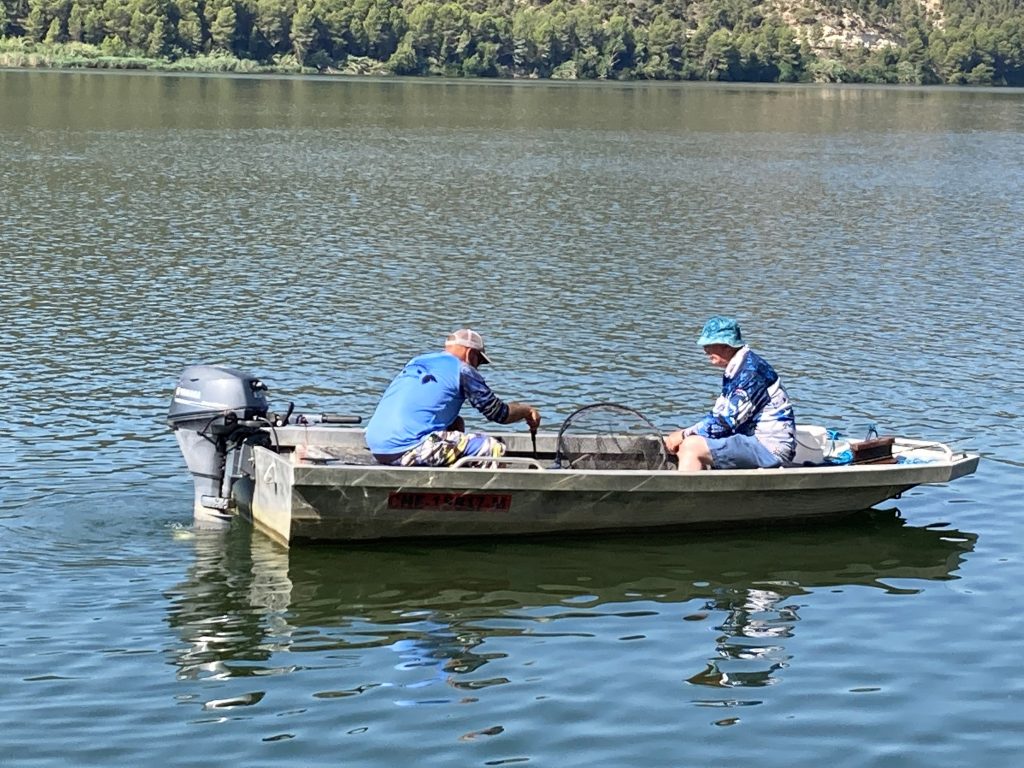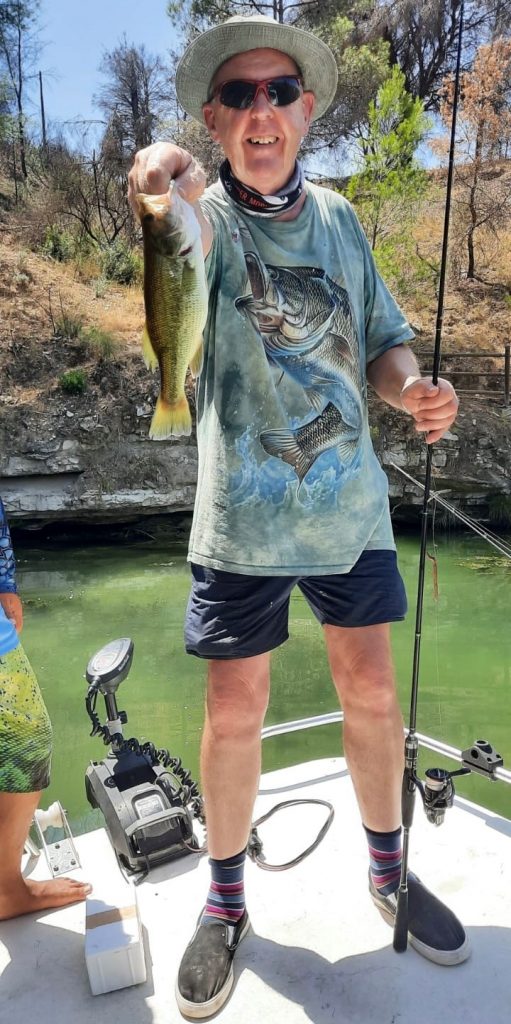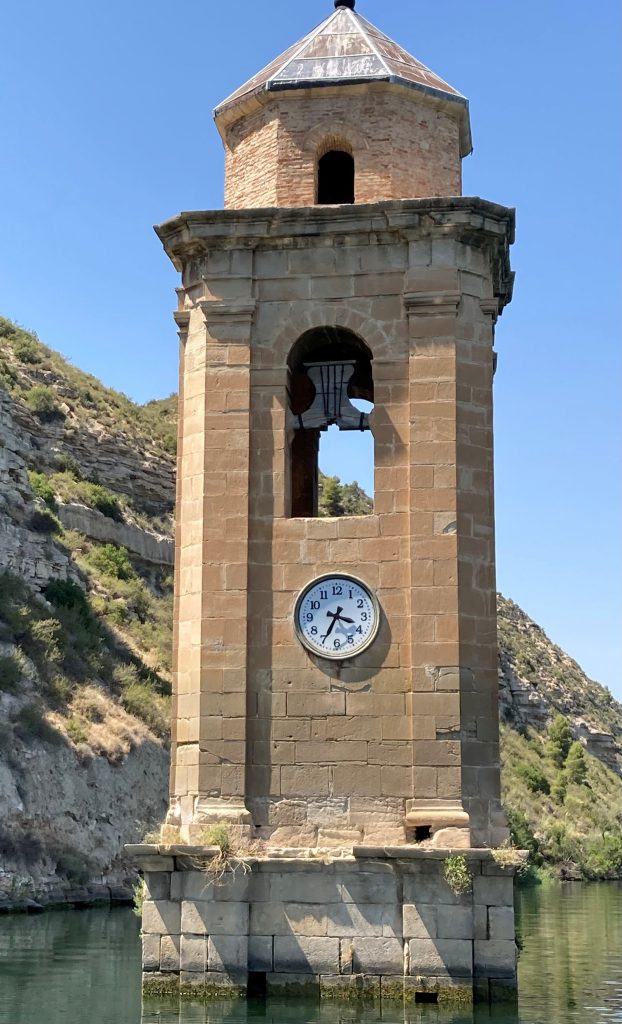In the second installment, Stan Ryan and crew move from the salt to the fresh.... The mighty Edbro!
MEQUINENZA
A split holiday doesn’t always work. One venue will nearly always be deemed to be better than the other. So it was with some trepidation that we set of for Mequinenza. We had to go via Reus airport to collect Donal as Ger was not interested in river fishing.
Mequinenza is a small town that has a long history and was involved in many battles from 49BC to the Romans and to the Franco period. A magnificent castle overlooks the Ebro. It was famous for coal mining and coal can be clearly see in the cliffs along the river.
The Mequinenza dam is, in part , responsible for the biggest catfish in Spain.

It’s about 1.5 hours from Reus to Mequinenza on reasonably good roads. Our house there looked over the river Segre and the town with a view that was spectacular at night.
Markus of Ebrourlaub met us and said that we would meet with him, Bruno and Johannes, that evening in the town at the Bar Restaurante Royal .It was straight down to business and we were to meet Johannes around 9pm the following morning for breakfast and follow him to the fishing area.

The breakfast was fit for a king and enough to keep a person going for a full day. Rolls for lunch were also available. Then across the road to the supermarket few went for lots of water which is essential with the high temperatures in this region.

Johannes was to stay with us for the week and is one of the best and hardest working guides that I have ever met. He was willing to stay out as long as we wanted. Because of the heat on the first day we said that we would leave at 6.30 to 7pm but he wanted to stay until 8pm. This was a man who really enjoyed every minute of his work. With the exception of Peter, we were all sea anglers with very little knowledge of coarse fishing. Many angling skills were learned on this trip.

For Wels catfish and carp halibut pellets were used on a hair rig. Ground bait consisted of tennis ball size balls of pellets that were dropped into the river where we were to target fish. Six rods were placed on rod stands. The river at this point is very wide and there was no way that we could cast out a distance of about 120M to the area where the fish were. So Johannes accompanied by one of us went out by boat to the sport and dropped a trace to the bottom accompanied by ground bait before returning with the rod to the stand and repeating this with each rod. It was absolutely essential to be in the right place in order to catch fish. We did witness other anglers near us dropping traces in the river by boat but they rarely caught a fish. This is where accurate knowledge learned over time pays off.


We took turns on the rods. Usually, one of the baits was taken quite quickly and it was critical that the fish was struck properly. The fish have hard mouths and the hook must be driven home. The catfish are very strong and fight right up to the bank. Johannes would often get into the water and help lift the fish onto a plastic mat that was laid on the ground. When photos were taken he carefully released the fish again. Carp up to 40lb were also caught and put up a great battle. As they had soft lips the hook often didn’t hold.


Markus and Bruno would usually show up sometime in the afternoon to see how we were getting along. I was not having much luck keeping fish on the hook and couldn’t understand why. Bruno immediately said that when striking I had the rod at a side angle and was actually pulling the hook out of the fish’s mouth. The strike had to be straight up. Immediately, I had success.
We had two days fishing for cats and carp and caught lots of them .The other group had the same experience.
Back afloat
Day 3 was in the boat. We started by targeting zander while at anchor. John had a brilliant time when he caught 9 good fish in an hour. So we presumed that it would be the

same for us. In fact they are very hard to hook. Small lures similar to those used for perch are cast out. The trick is to wind slowly a couple of turns of the reel and drop the lure to the bottom again. Zander tend the take the lure on the drop and all that is felt is a soft pluck on the lure. The fish is usually gone before an angler gets time to strike. Peter managed two fine fish but the three of us did not manage to hook one despite feeling them hit the lure.

So we set off downstream. Johannes brought us up a gorge where we could see black bass in and around weed and under trees. This was sight fishing with an earthworm on a single hook and was actually very exciting. Many of the fish were quite small but gave a great fight on light gear.
Further downstream we came to the sunken village of Fayon. Another dam downstream from Mequinenza was built in 1967 at a place called Ribarroja and the local people now live in a new village, uphill, from the original houses and buildings. The steeple of the chapel of St. George rises up from the river and clock on it actually gives the correct time. It is of course a replacement of the original.

We tried for perch here in vain and so we went to another destination where a railroad tunnel emerged from the cliff face. The railroad there had basically been blown up during the Spanish civil war. Between this tunnel and a concrete railway support we caught many large perch up to about 3lbs and they do grow bigger there. It was nonstop action for about 40 minutes and then they stopped feeding.

What an end to a brilliant weeks fishing!!
Here is a little slideshow/ video
The wild life is this area is stunning, vultures, red kites, eagles, magnificent butterflies. Unfortunately, I didn’t have me better lenses with me to get good photographs of them.

The details and costs of Stan’s Trip:
The price of our trip was as follows:
Cost of the Trip
Flights €413
Car hire €400….€100 each
Apartment €880 per week…..€110 each
Chasing Blue boat €750 per day…..€656 each
Ebro €450 each
Per Person total is €1729 each
All equipment and bait was supplied.
PLEASE NOTE THAT FIGURES GIVEN ARE BASED ON 2 GROUPS OF 4 ANGLERS
The price for fishing the Ebro is determined by the number of anglers and how long they fish. Bruno puts a package together for each group.
Erik’s price per day for the boat will be €1150 per day……fuel costs have gone up a lot.
That’s €1006 per angler which is still very reasonable. From our experience we caught several bluefin per day.
The months for catching bluefin are April & May or July & August.
Erik also targets several species during the other months.
Check his website https://www.chasingblue-fishing.com/season-and-species/when-is-the-best-time-to-fish/


